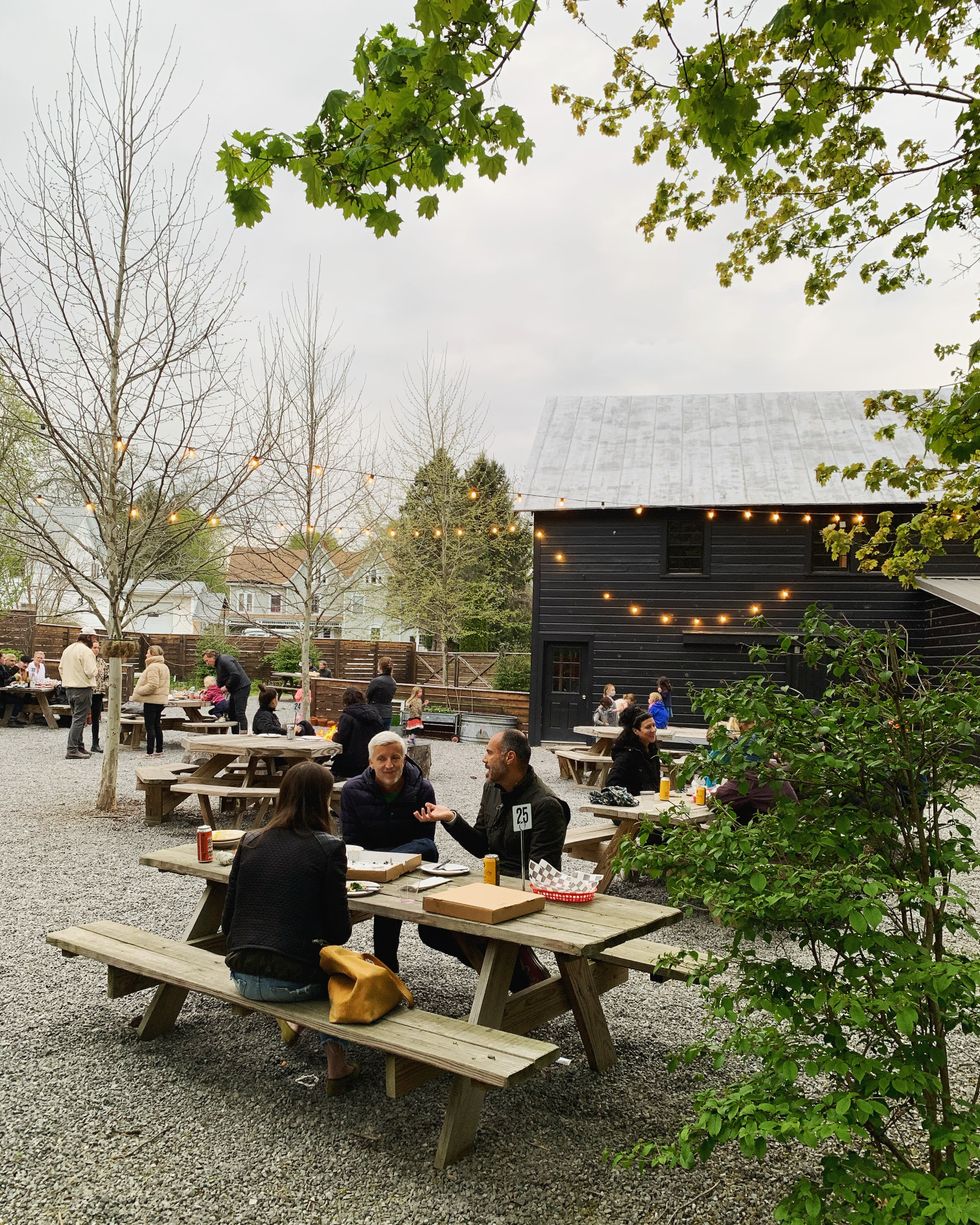I’ve visited the hamlet of Wassaic (in the town of Amenia, N.Y.), countless times — both as a reporter for The Millerton News and as cyclist on the Rail Trail.
I’ve come to love the stories behind the little collection of buildings in the valley behind the Metro-North train station, many of which are part of The Wassaic Project, an arts colony created in 2008 by (at that time) recent college graduates Bowie Zunino, Jeff Barnett-Winsby and Eve Biddle.
The buildings in the center of the hamlet, which is bissected by a still-active train track, are an important part of the region’s agricultural history, the marketplace where farmers would sell their livestock at auctions held in the Luther Barn, which is now home to studios for artists taking part in the Wassaic Project residency program.
The former Maxon grain mill that towers over the hamlet and the train tracks is now a multi-story art gallery.
I tell the tales of these and the other buildings again and again to family and friends and anyone who will listen, about Wassaic’s notable buildings, and the many community activities that have helped bring the hamlet back to life after decades of dormancy.
Summer Art in the Hamlet
Wassaic Project Executive Co-Director Jeff Barnett-Winsby said two art exhibitions are in the hamlet this summer.
The first is in the Maxon Mills building and is called, “If You Lived Here You’d Be Home By Now.”
The second exhibition will be in the form of a book, “Secret of the Friendly Woods.” The new tradition of doing a print publication began last summer, when COVID-19 restrictions kept visitors from seeing art in person. The show is open Saturdays and Sundays from noon to 5 p.m. until Saturday, Sept. 18.
There will be a limit on the number of people who can see the show at one time. There won’t be any reservations, it will be first-come-first served. Find out more at www.wassaicproject.org.
Parties and Outdoor Dining
The Wassaic Project has been notable for its efforts to become part of the surrounding community. Two “Block Parties” are being planned for this summer, plus a party on the Maxon Mills porch on Monday, June 26, with tours of the summer exhibition and a talk by New York magazine art critic Jerry Saltz.
Across the train tracks from the art-dedicated buildings is The Lantern, a bar that was once a popular spot for weekly meetings of area billiards leagues. The Wassaic Project founders have maintained some of the character of the old bar but have added upgrades including an outdoor eating area with picnic tables at which to enjoy the now-famous wood-fired pizza, fresh pasta, salads and weekly cocktail specials.
The Lantern opens at 2 p.m. on Fridays through Sundays. For now, dining is outdoors or by takeout; check the website to see what the new protocols will be as COVID-19 guidelines change ( www.wassaiclanterninn.com).
Food publications (and Food) at Newsstand
Another draw on weekends is the Newsstand, a tiny structure designed to look like an actual newsstand by architect Matthew Schnepf. The stand sells food-themed publications and actual food (often including pastries by Ari Paradise, baker at the nearby Troutbeck hotel in Amenia).
Installed by Ten Mile Table last summer, the idea behind the pop-up is to “highlight and support diverse, thought-provoking voices in food/wine/art print publishing, and makers in food, art and hospitality.”
Find the Newsstand schedule (which might include a hamlet-wide clambake) at www.tenmiletable.com/wassaic-newsstand.
Another draw to the hamlet is the green barn purchased last year by Schnepf and his wife, Munawar Ahmed, which is now home not only to a shop selling everything from maple syrup to sheepskin rugs to furniture made by local artisans; but also a small bike rental shop, for visitors who want to use Wassaic as the stepping off point for cycling on the Rail Trail.
Children Welcome in Wassaic
Wassaic is a particularly welcoming destination for families with children. There is an active streetlife in the hamlet now, with many families milling around and visiting with each other on weekends.
The Wassaic Project also offers summer arts programs for children and teens.
Varsity Arts Camp is for rising ninth through 12th graders; a Junior Varsity Arts Camp is for rising fifth through eighth graders; and an Art Scouts program is for rising first through fourth graders.
The arts campers visit the exhibiyions at Maxon Mills and work on their own projects, which are shown in a mini-exhibition at the end of the week of their program. The camps are in August, with separate weeks for each age group.
To find out more, go to www.wassaicproject.org/education.










 Penguin Random House
Penguin Random House
 A needlework example.Cynthia Hochswender
A needlework example.Cynthia Hochswender Alexandra Peters, left, is exhibiting needlework samplers from her collection at the Litchfield Historical Society Museum.Cynthia Hochswender
Alexandra Peters, left, is exhibiting needlework samplers from her collection at the Litchfield Historical Society Museum.Cynthia Hochswender



